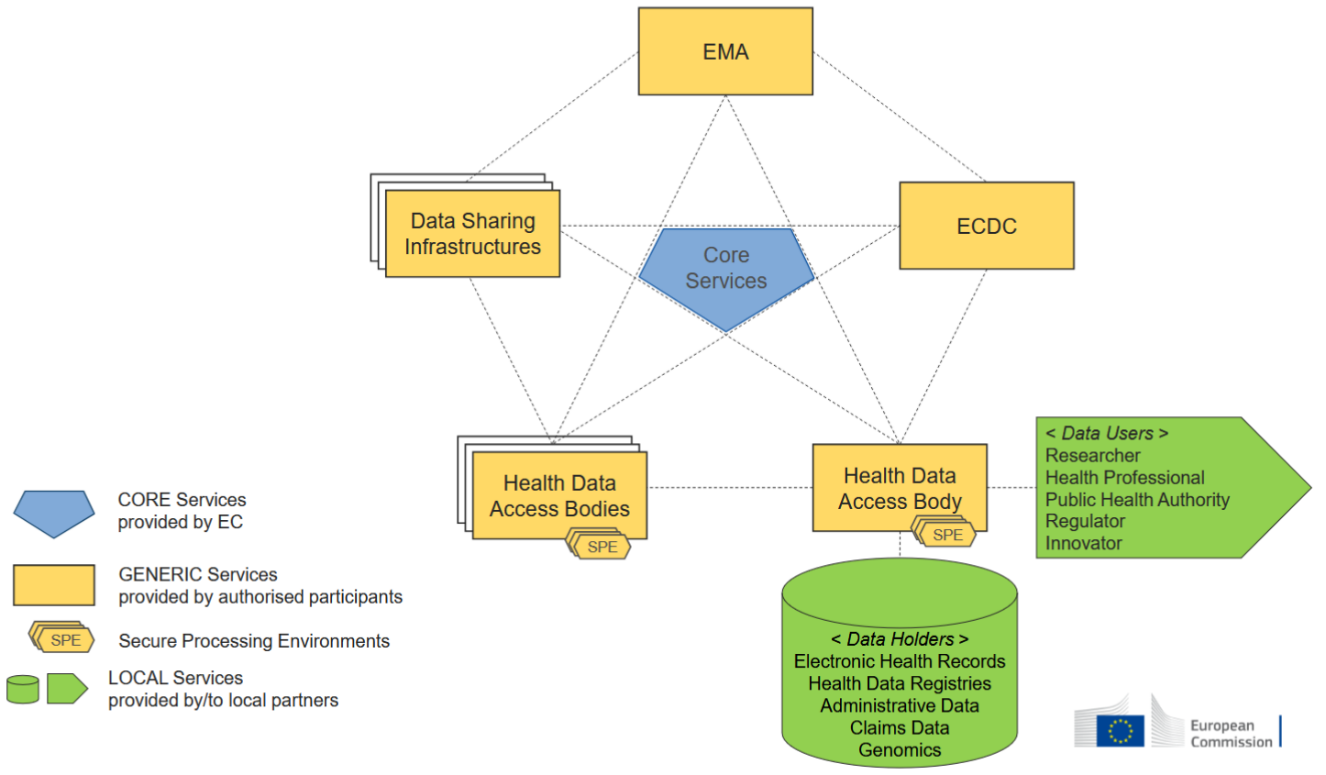As Europe moves towards a unified digital health ecosystem, the European Health Data Space (EHDS) emerges as a transformative initiative, redefining how health data is accessed, shared, and used across member states. At the heart of this transformation is COMFORTage, a forward-looking project building a secure, interoperable infrastructure tailored to the needs of Europe’s ageing population.
What is European Health Data Space?
The EHDS is a flagship initiative of the European Union aimed at creating a harmonized framework for the exchange and secondary use of health data. Its core objectives are:
- Empowering individuals with seamless access to their digital health records across the EU.
- Creating a unified market for health data systems and medical technologies, including high-risk AI tools.
- Facilitating secure secondary use of data for research, innovation, policymaking, and regulatory oversight.
To achieve these goals, EHDS enforces interoperability, robust privacy safeguards, and strong governance mechanisms.
COMFORTage: An EHDS-Aligned Ecosystem for Ageing Health
COMFORTage exemplifies how EHDS principles can be applied in real-world settings. By designing its infrastructure—Ageing-EHDS—with EHDS compliance at its core, the project enables the secure and ethical use of health data for better care outcomes, particularly for older populations.

1. Standards-Based Data Modeling and Privacy-by-Design
COMFORTage has proactively adopted common data modeling standards such as HAPI-FHIR, which align with EHDS’s requirement for data harmonization and interoperability. It also implements a Secure Decentralized Big Data Management Framework, ensuring privacy-preserving data sharing and storage.
All health data handled by COMFORTage follows the dual-use philosophy of EHDS:
- Primary use: Facilitating cross-border access to electronic health records (EHRs), prescriptions, and lab results.
- Secondary use: Enabling research and policymaking through anonymized data, without compromising individual privacy.
One of the cornerstone elements of the EHDS architecture is the Secure Processing Environment (SPE). This environment, along with defined rules for data preparation and user access, is central to ensuring the safe, efficient use of health data.
Data preparation involves a number of critical steps — from collection and standardization to publication — all managed by data holders. In the COMFORTage project, these tasks are carried out by designated data connectors. The project utilizes a common data model and introduces Holistic Health Records, built in accordance with the HAPI-FHIR standard. Moreover, the data is handled through a Secure Decentralized Big Data Management Framework.
Once data sets are made available through platforms like the Ageing-EHDS, the user journey begins. Authorized users — whether clinicians in EU member states, policymakers, or researchers — can discover, access, and analyze health data across borders. This access is governed by a new entity envisioned by EHDS: the Health Data Access Body (HDAB). The HDAB will oversee how SPEs implement algorithms, workflows, and AI tools

To ensure legal and ethical oversight, EHDS introduces the Health Data Access Body (HDAB). In COMFORTage, this role manages data access permissions, ensures regulatory compliance, and oversees the lifecycle of data processing—from request to deletion.
Alignment with IDSA for Trusted Data Exchange
Beyond EHDS, COMFORTage strengthens its foundation by adopting the International Data Spaces Association (IDSA) Reference Architecture Model. This ensures:
- Use of IDSA-compliant connectors for secure and policy-driven data sharing.
- Metadata catalogues for efficient dataset discovery.
- Decentralized trust frameworks that preserve data sovereignty.
This dual alignment with EHDS and IDSA positions COMFORTage as a model for cross-border, cross-sectoral data collaboration in Europe.
Strategic Outlook
With EHDS regulations politically agreed upon in April 2024 and full implementation expected by 2028, COMFORTage is ahead of the curve. By developing an infrastructure already aligned with EHDS and IDSA standards, it stands as a scalable, future-ready solution for health data management in an ageing Europe.
**Article written by UBITECH Ltd, a key partner in the COMFORTage project.
